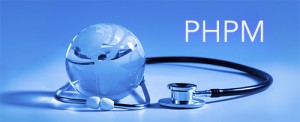Over a century ago, American educator Abraham Flexner established what would become a traditional curriculum structure for U.S. medical schools: two years of basic science education in the classroom followed by two years of clinical experience. Although medical schools have been successful at producing physicians, Flexner could not have imagined the modern practice of medicine in a progressively more complex U.S. healthcare system—a system that has been documented to be unsafe, inefficient, expensive and not equitable.
Physicians as Healers, Physicians as Navigators
Everyday, today’s competent physician must help patients and families navigate through health-system intricacies. In order to do so effectively, doctors must have a basic understanding of medical economics and the U.S. healthcare system. Yet most medical schools don’t provide such training. They teach only the basic sciences, clinical reasoning and communication skills. Most are not providing the comprehensive education they should. Keeping medical students in the dark about the healthcare system does a great disservice to these future physicians, their patients and society.
Patients expect their doctors to know the healthcare system, guide them through tough healthcare choices and keep them safe. Yet between 200,000 and 400,000 patients die each year because of medical errors. Health disparities lead to preventable deaths at a great cost to individuals, families and society. The number-one cause of personal bankruptcies in the U.S. is unpaid medical bills.
Physicians can address health disparities through clinical practice and by advocating for health-system reforms. They can partner with communities to work toward better health outcomes and appreciate the important interface between public health and clinical medicine. Clinicians must work effectively on teams with members of other health professions to collectively promote higher-quality, safer care that is patient-centered.
A Call to Action
There has been an increase in calls by several organizations, including the Association of American Medical Colleges, the Institute of Medicine and the Liaison Committee on Medical Education, to enhance the teaching of the practice of medicine and population health in medical education. Albert Einstein College of Medicine students, like their national counterparts, have indicated on both local and national surveys their belief that instruction on these topics needs enhancement.
In order to prepare students to successfully practice in a rapidly evolving healthcare system, Einstein solicited a working group of faculty, students and interprofessional experts to establish a new longitudinal-theme program: the Population Health and the Practice of Medicine (PHPM) curriculum. The PHPM working group, which was officially launched in the fall of 2013, has established competency-based learning objectives and content organized under 10 subdomains:
- Public Health and Medicine
- Health Disparities and Determinants of Health
- Community, Occupational and Environmental Health
- Healthcare and Quality Improvement
- Enhancing Patient Safety in Medicine
- Interprofessional Team Healthcare and Training
- Medical Economics
- Healthcare Systems
- Practice Management
- Law and Medicine
The group developed a map distinguishing where PHPM topics were already covered in our current curriculum. In other cases, the group worked with faculty to integrate PHPM content into existing basic and clinical science instructional sessions. Wherever educational gaps were identified, we developed new sessions.
For many years, Einstein students learned principles of community health through service-learning projects in the Family Medicine clerkship; they were introduced to public-health concepts in the Introduction to Clinical Medicine course; they learned about Medicare and the economic and health impact on elder patients in the Geriatrics clerkship; and they explored teamwork in improving patient safety in the Patients, Doctors and Communities course and the Ob-Gyn clerkship.
Expanding Learning Opportunities, Identifying Expertise
The PHPM initiative has built several new learning opportunities. Students in the Medicine clerkship learn the fundamentals of the healthcare system, identify barriers to optimal health outcomes on the wards and discuss solutions. Einstein students explore the benefits of interprofessional team approaches to diabetes care in the Endocrinology course; participate in interdisciplinary rounds in the Medicine and Geriatrics clerkships; and work together with Columbia nursing students in team-based learning exercises to solve primary-care cases. New quality-improvement and patient-safety sessions are being piloted for first-year students; the Microbiology course faculty will partner with quality-improvement officers at Montefiore Medical Center, the University Hospital for Einstein, to allow students a “hands-on” experience in reducing hospital-acquired infections; and students get the opportunity to practice disclosing a medical error to a family in the Pediatrics clerkship.
Fourth-year students also benefit from a new PHPM intersession day, which brings all participants from all the Ambulatory Care selectives to learn and apply concepts such as the impact of health policy on healthcare delivery; how financial reimbursements to physicians and clinical institutions work; and assisting patients through drug formularies, tiers and prior authorizations while keeping patient costs down. We also partnered with the Federation of Jewish Philanthropy to teach students the essentials of medical malpractice and professionalism boards.
These experiences are just the tip of the PHPM iceberg, as we are introducing new sessions all year round. We have also launched a Twitter feed (@EinsteinPHPM) to provide content about population medicine and population health, and to spark discussion.
Through the PHPM curriculum, Einstein is committing itself to a critical goal: training our medical students for the full scope of medicine in the 21st century so they can deliver the most comprehensive and useful care.


